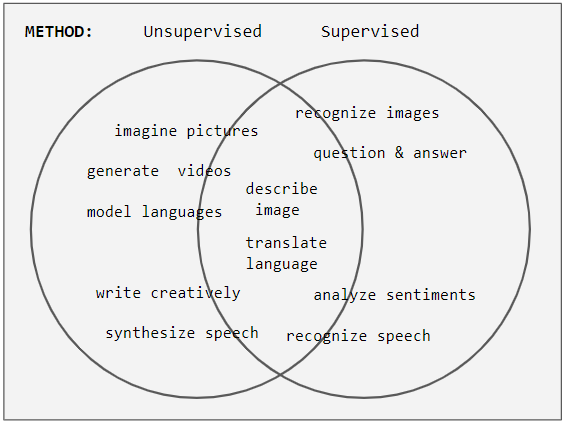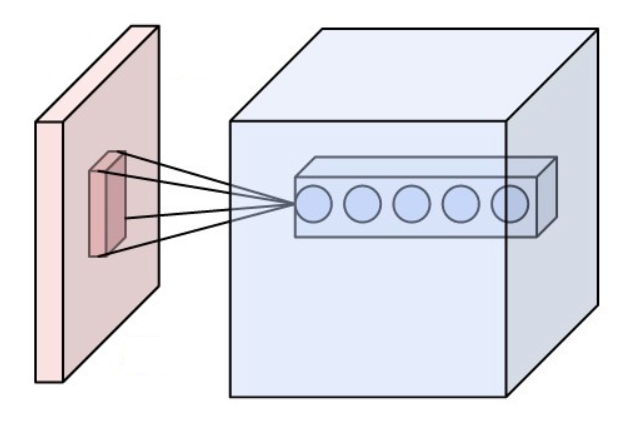|
Neocognitron
__NOTOC__ The neocognitron is a hierarchical, multilayered artificial neural network proposed by Kunihiko Fukushima in 1979. It has been used for Japanese Handwriting recognition, handwritten character recognition and other pattern recognition tasks, and served as the inspiration for convolutional neural networks. The neocognitron was inspired by the model proposed by David H. Hubel, Hubel & Torsten Wiesel, Wiesel in 1959. They found two types of cells in the visual primary cortex called ''simple cell'' and ''complex cell'', and also proposed a cascading model of these two types of cells for use in pattern recognition tasks. The neocognitron is a natural extension of these cascading models. The neocognitron consists of multiple types of cells, the most important of which are called ''S-cells'' and ''C-cells.'' The local features are extracted by S-cells, and these features' deformation, such as local shifts, are tolerated by C-cells. Local features in the input are integrated gradu ... [...More Info...] [...Related Items...] OR: [Wikipedia] [Google] [Baidu] |
Convolutional Neural Network
In deep learning, a convolutional neural network (CNN, or ConvNet) is a class of artificial neural network (ANN), most commonly applied to analyze visual imagery. CNNs are also known as Shift Invariant or Space Invariant Artificial Neural Networks (SIANN), based on the shared-weight architecture of the convolution kernels or filters that slide along input features and provide translation- equivariant responses known as feature maps. Counter-intuitively, most convolutional neural networks are not invariant to translation, due to the downsampling operation they apply to the input. They have applications in image and video recognition, recommender systems, image classification, image segmentation, medical image analysis, natural language processing, brain–computer interfaces, and financial time series. CNNs are regularized versions of multilayer perceptrons. Multilayer perceptrons usually mean fully connected networks, that is, each neuron in one layer is connected to ... [...More Info...] [...Related Items...] OR: [Wikipedia] [Google] [Baidu] |
Kunihiko Fukushima
Kunihiko Fukushima (Japanese: 福島 邦彦, born 16 March 1936) is a Japanese computer scientist, most noted for his work on artificial neural networks and deep learning. He is currently working part-time as a Senior Research Scientist at the Fuzzy Logic Systems Institute in Fukuoka, Japan. In 1980, Fukushima published the neocognitron, the original deep convolutional neural network (CNN) architecture. Fukushima proposed several supervised and unsupervised learning algorithms to train the parameters of a deep neocognitron such that it could learn internal representations of incoming data. Today, however, the CNN architecture is usually trained through backpropagation. This approach is now heavily used in computer vision. In 1958, Fukushima received his Bachelor of Engineering in electronics from Kyoto University. He became a Senior Research Scientist at the NHK Science & Technology Research Laboratories. In 1989, he joined the faculty of Osaka University. In 1999, he joined ... [...More Info...] [...Related Items...] OR: [Wikipedia] [Google] [Baidu] |
Unsupervised Learning
Unsupervised learning is a type of algorithm that learns patterns from untagged data. The hope is that through mimicry, which is an important mode of learning in people, the machine is forced to build a concise representation of its world and then generate imaginative content from it. In contrast to supervised learning where data is tagged by an expert, e.g. tagged as a "ball" or "fish", unsupervised methods exhibit self-organization that captures patterns as probability densities or a combination of neural feature preferences encoded in the machine's weights and activations. The other levels in the supervision spectrum are reinforcement learning where the machine is given only a numerical performance score as guidance, and semi-supervised learning where a small portion of the data is tagged. Neural networks Tasks vs. methods Neural network tasks are often categorized as discriminative (recognition) or generative (imagination). Often but not always, discriminative ... [...More Info...] [...Related Items...] OR: [Wikipedia] [Google] [Baidu] |
Artificial Neural Network
Artificial neural networks (ANNs), usually simply called neural networks (NNs) or neural nets, are computing systems inspired by the biological neural networks that constitute animal brains. An ANN is based on a collection of connected units or nodes called artificial neurons, which loosely model the neurons in a biological brain. Each connection, like the synapses in a biological brain, can transmit a signal to other neurons. An artificial neuron receives signals then processes them and can signal neurons connected to it. The "signal" at a connection is a real number, and the output of each neuron is computed by some non-linear function of the sum of its inputs. The connections are called ''edges''. Neurons and edges typically have a ''weight'' that adjusts as learning proceeds. The weight increases or decreases the strength of the signal at a connection. Neurons may have a threshold such that a signal is sent only if the aggregate signal crosses that threshold. Typically, ... [...More Info...] [...Related Items...] OR: [Wikipedia] [Google] [Baidu] |
Selective Attention
Attentional control, colloquially referred to as concentration, refers to an individual's capacity to choose what they pay attention to and what they ignore. It is also known as endogenous attention or executive attention. In lay terms, attentional control can be described as an individual's ability to concentrate. Primarily mediated by the frontal areas of the brain including the anterior cingulate cortex, attentional control is thought to be closely related to other executive functions such as working memory. General overview of research Sources of attention in our brain create a system of three networks: alertness (maintaining awareness), orientation (information from sensory input), and executive control (resolving conflict). These three networks have been studied using experimental designs involving adults, children, and monkeys, with and without abnormalities of attention. Research designs include the Stroop task and flanker task, which study executive control with ... [...More Info...] [...Related Items...] OR: [Wikipedia] [Google] [Baidu] |
Self-organizing Map
A self-organizing map (SOM) or self-organizing feature map (SOFM) is an unsupervised machine learning technique used to produce a low-dimensional (typically two-dimensional) representation of a higher dimensional data set while preserving the topological structure of the data. For example, a data set with p variables measured in n observations could be represented as clusters of observations with similar values for the variables. These clusters then could be visualized as a two-dimensional "map" such that observations in proximal clusters have more similar values than observations in distal clusters. This can make high-dimensional data easier to visualize and analyze. An SOM is a type of artificial neural network but is trained using competitive learning rather than the error-correction learning (e.g., backpropagation with gradient descent) used by other artificial neural networks. The SOM was introduced by the Finnish professor Teuvo Kohonen in the 1980s and therefore is som ... [...More Info...] [...Related Items...] OR: [Wikipedia] [Google] [Baidu] |
Receptive Field
The receptive field, or sensory space, is a delimited medium where some physiological stimuli can evoke a sensory neuronal response in specific organisms. Complexity of the receptive field ranges from the unidimensional chemical structure of odorants to the multidimensional spacetime of human visual field, through the bidimensional skin surface, being a receptive field for touch perception. Receptive fields can positively or negatively alter the membrane potential with or without affecting the rate of action potentials. A sensory space can be dependent of an animal's location. For a particular sound wave traveling in an appropriate transmission medium, by means of sound localization, an auditory space would amount to a reference system that continuously shifts as the animal moves (taking into consideration the space inside the ears as well). Conversely, receptive fields can be largely independent of the animal's location, as in the case of place cells. A sensory space can also ... [...More Info...] [...Related Items...] OR: [Wikipedia] [Google] [Baidu] |
Pattern Recognition
Pattern recognition is the automated recognition of patterns and regularities in data. It has applications in statistical data analysis, signal processing, image analysis, information retrieval, bioinformatics, data compression, computer graphics and machine learning. Pattern recognition has its origins in statistics and engineering; some modern approaches to pattern recognition include the use of machine learning, due to the increased availability of big data and a new abundance of processing power. These activities can be viewed as two facets of the same field of application, and they have undergone substantial development over the past few decades. Pattern recognition systems are commonly trained from labeled "training" data. When no labeled data are available, other algorithms can be used to discover previously unknown patterns. KDD and data mining have a larger focus on unsupervised methods and stronger connection to business use. Pattern recognition focuses more on the ... [...More Info...] [...Related Items...] OR: [Wikipedia] [Google] [Baidu] |
Deep Learning
Deep learning (also known as deep structured learning) is part of a broader family of machine learning methods based on artificial neural networks with representation learning. Learning can be Supervised learning, supervised, Semi-supervised learning, semi-supervised or Unsupervised learning, unsupervised. Deep-learning architectures such as #Deep_neural_networks, deep neural networks, deep belief networks, deep reinforcement learning, recurrent neural networks, convolutional neural networks and Transformer (machine learning model), Transformers have been applied to fields including computer vision, speech recognition, natural language processing, machine translation, bioinformatics, drug design, medical image analysis, Climatology, climate science, material inspection and board game programs, where they have produced results comparable to and in some cases surpassing human expert performance. Artificial neural networks (ANNs) were inspired by information processing and distr ... [...More Info...] [...Related Items...] OR: [Wikipedia] [Google] [Baidu] |
Artificial Neural Network
Artificial neural networks (ANNs), usually simply called neural networks (NNs) or neural nets, are computing systems inspired by the biological neural networks that constitute animal brains. An ANN is based on a collection of connected units or nodes called artificial neurons, which loosely model the neurons in a biological brain. Each connection, like the synapses in a biological brain, can transmit a signal to other neurons. An artificial neuron receives signals then processes them and can signal neurons connected to it. The "signal" at a connection is a real number, and the output of each neuron is computed by some non-linear function of the sum of its inputs. The connections are called ''edges''. Neurons and edges typically have a ''weight'' that adjusts as learning proceeds. The weight increases or decreases the strength of the signal at a connection. Neurons may have a threshold such that a signal is sent only if the aggregate signal crosses that threshold. Typically, ... [...More Info...] [...Related Items...] OR: [Wikipedia] [Google] [Baidu] |
Scale-invariant Feature Transform
The scale-invariant feature transform (SIFT) is a computer vision algorithm to detect, describe, and match local '' features'' in images, invented by David Lowe in 1999. Applications include object recognition, robotic mapping and navigation, image stitching, 3D modeling, gesture recognition, video tracking, individual identification of wildlife and match moving. SIFT keypoints of objects are first extracted from a set of reference images and stored in a database. An object is recognized in a new image by individually comparing each feature from the new image to this database and finding candidate matching features based on Euclidean distance of their feature vectors. From the full set of matches, subsets of keypoints that agree on the object and its location, scale, and orientation in the new image are identified to filter out good matches. The determination of consistent clusters is performed rapidly by using an efficient hash table implementation of the generalised Hou ... [...More Info...] [...Related Items...] OR: [Wikipedia] [Google] [Baidu] |






